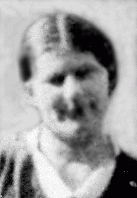You searched for: ust众筹理财项目定制开发【tg���������@ek7676】平台包网搭建unit众筹理财项目定制开发【tg���������@ek7676】平台包网搭建inhrgdhghm
<< Previous | Displaying results 1401-1450 of 1751 for "ust众筹理财项目定制开发【tg���������@ek7676】平台包网搭建unit众筹理财项目定制开发【tg���������@ek7676】平台包网搭建inhrgdhghm" | Next >>
-
Pinchas Gerszonowicz
ID CardPinchas was born into a large family living in the town of Miechow in south central Poland. His father was a machinist and locksmith. Pinchas spent long days studying, either learning Hebrew in the Jewish school or taking general subjects at the public school. He belonged to the Zionist youth organization, Ha Shomer ha-Tsa'ir, and played left wing for a Jewish soccer team. 1933-39: At 13 Pinchas finished school and started work as an apprentice machinist and blacksmith in a building contractor's shop.…
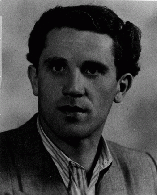
-
Adela Litwak
ID CardAdela was the youngest of five children born to religious Jewish parents in the industrial city of Lvov. Often known by her nickname, Putzi, she grew up in the same building as her paternal grandparents and learned to speak Polish, German and Yiddish. She attended public and private schools in Lvov before graduating from a Polish secondary school. 1933-39: Adela's dream was to go on to medical school. But the tiny Jewish quota at colleges and universities virtually excluded Jews from enrolling. By…

-
Hersh Gordon
ID CardHersh was born to a Jewish family in Kovno, the capital of independent Lithuania. Hersh's father was a mechanic in a textile factory, and his mother had worked as a hat designer until he was born. The Gordons lived on the first floor of Hersh's grandfather's apartment building. Eight-year-old Hersh was in the third grade at public elementary school. 1933-39: In the summers Hersh and his mother would go to his Aunt Ettel and Uncle Abraham in a small town not far away. They'd take a boat down the river to…
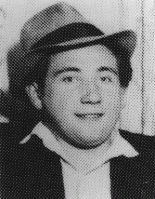
-
Johanna (Hanne) Hirsch
ID CardHanne was born to a Jewish family in the German city of Karlsruhe. Her father, Max, was a photographer. When he died in 1925, Hanne's mother, Ella, continued to maintain his studio. In 1930 Hanne began public school. 1933-39: In April 1933 Hanne's family's studio, like the other Jewish businesses in Karlsruhe, was plastered with signs during the anti-Jewish boycott: "Don't buy from Jews." At school, a classmate made Hanne so furious with her taunts that she ripped her sweater. After the November 1938…
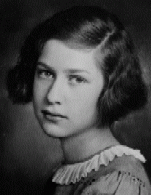
-
Ernest G. Heppner
ID CardErnest was one of three children born to a Jewish family in the commercial city of Breslau, which had one of the largest Jewish communities in Germany. His father, a World War I veteran, owned a factory that made matzah, the unleavened bread used during the Jewish holiday of Passover. Ernest was 12 when Hitler took power in 1933. 1933-39: Ernest often got in trouble at school because people called him names. "Christ-killer" and "your father kills Christian babies for Passover" were common taunts. Many…
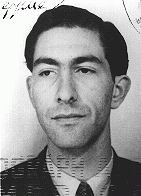
-
Eva Braun Levine
ID CardEva was the second daughter of five children born to Jewish parents. Her father dealt in real estate, and the family owned the apartment building in which they lived. The building had an elevator, a luxury for that time. Eva finished high school, and she began working for her father and studying history at a small local university. 1933-39: Nightlife for young people was lively in Lodz, and Eva often went dancing with her boyfriend, Herman. In 1939 they married. Then the Germans invaded. One day, the…
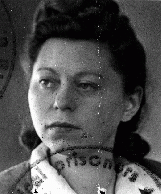
-
Mendel Rozenblit
ID CardMendel was one of six children born to a religious Jewish family. When Mendel was in his early 20s, he married and moved with his wife to her hometown of Wolomin, near Warsaw. One week after the Rozenblits' son, Avraham, was born, Mendel's wife died. Distraught after the death of his young wife and left to care for a baby, Mendel married his sister-in-law Perele. 1933-39: In Wolomin Mendel ran a lumber yard. In 1935 the Rozenblits had a daughter, Tovah. When Avraham and Tovah were school age, they began…

-
Frimit Bursztyn
ID CardFrimit was one of eight children born to Yiddish-speaking, religious Jewish parents. The Bursztyns lived in the heart of the same Jewish neighborhood in Warsaw where Frimit's father owned and operated a bakery located on Zamenhofa Street. In 1920 the Bursztyns moved to a comfortable, two-bedroom apartment in the same neighborhood at 47 Mila Street. Frimit attended Warsaw public schools. 1933-39: By 1939 six of Frimit's brothers and sisters had already moved out. Only Frimit and her younger brother were…
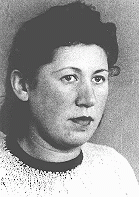
-
Kathe Ert Reichstein
ID CardKaethe was the fifth of nine children born to Jewish parents. After graduating from secondary school, Kaethe worked with her father in his bakery. In 1918 she married Samson Reichstein, and the couple settled in Hanover, where Samson was based as a salesman. Their son Herbert was born in 1920. As his wife, Kaethe was officially required to take on her husband's citizenship. 1933-39: In 1938 Kaethe and her husband succeeded in obtaining an exit visa for the United States for their 18-year-old son Herbert…

-
Szlamach Radoszynski
ID CardSzlamach was one of six children born to Yiddish-speaking, religious Jewish parents. Szlamach's father was a peddler, and the Radoszynski family lived in a modest apartment in Warsaw's Praga section on the east bank of the Vistula River. After completing his schooling at the age of 16, Szlamach apprenticed to become a furrier. 1933-39: During the 1930s Szlamach owned a fur business. Despite the Depression, he was hoping the economy would turn around so that he could make enough money to move into his own…

-
Henia Ring
ID CardThe youngest of two children, Henia was born to a Jewish family in the town of Krzepice. By the early 1930s, the Jewish population of Krzepice comprised more than 40 percent of the town's inhabitants. Henia's father made his living trading cattle in the area. Henia attended a public elementary school. 1933-39: On September 1, 1939, the Germans invaded Poland; a day later, they entered Henia's town. Her family tried to escape to Warsaw but the German forces quickly overtook them and ordered them back to…
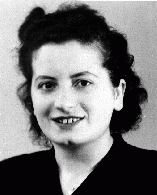
-
Frank Meissner
ID CardFrank's town of Trest in western Moravia had a small Jewish community of 64 members in 1930, and Frank was sometimes beaten up in grade school because of antisemitism. When the Meissners' wooden shoe factory closed, Frank's father turned to the furniture industry. But due to post-World War I economic uncertainty, he lost his livelihood. To support the family, Mrs. Meissner worked as a secretary. 1933-39: Trest was small and didn't have a secondary school, so Frank studied during the week in the…
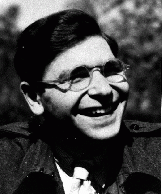
-
Chaim Engel
ID CardChaim's family came from a small town where his father owned a textile store. When antisemitic pogroms broke out in Brudzew, the Engels moved to the industrial city of Lodz. Chaim was then 5 years old. In Lodz he attended a Jewish school that also provided a secular education. After finishing middle school, Chaim went to work at his uncle's textile factory. 1933-39: Chaim's neighborhood in Lodz was predominantly Jewish, so most of his friends were Jews. As a young adult he began his compulsory army…
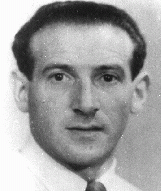
-
Jacob Polak
ID CardJacob, known as "Jaap," and his three sisters grew up in Amsterdam in a religious, Zionist Jewish family that could trace its roots in the Netherlands back 200 years. Jaap attended a Jewish elementary school until the age of 12, and then enrolled in a commercial high school, where he studied accounting. After graduating, he took a position in the Amsterdam Carlton Hotel. He worked there in 1931 and 1932. 1933-39: Jaap's life had been centered mostly in the Jewish community, so the Carlton Hotel was a new,…
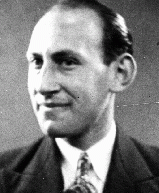
-
Maria Sava Moise
ID CardMaria was one of four children born to poor Roma ("Gypsy") parents in the capital of Moldavia in eastern Romania. The family lived in a mixed neighborhood that included Romanians and Roma. Maria grew up in a house with a yard where the family kept a pig and some chickens. Her father made a living by singing and by working at some of the many wineries that dotted the Moldavian countryside. 1933-39: Maria's parents couldn't afford to send her to school. To help make ends meet, Maria, her sister and older…
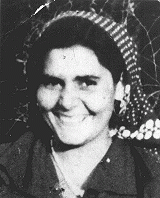
-
Harry Pauly
ID CardAs a young boy growing up in Berlin, Harry developed a love for the theater. At 15 he began acting in minor roles at a theater at the Nollendorfplatz. He was also apprenticed to a hairdresser but disliked the work. He spent most of his time with other actors, both at the theater and in nightclubs where gay men gathered. 1933-39: When the Nazis came to power, they closed the gay bars. Some gay men, especially those who were Jewish, were killed by Nazi sympathizers; Harry's friend "Susi," a drag queen, was…

-
Karl Lange
ID CardKarl was born in the north German port of Hamburg. His father was American, and his mother was German. Soon after Karl was born, his father returned to the United States and a little later, his parents were divorced. Karl left school when he was 14 and worked as a shop apprentice. 1933-39: In 1935 an informer told the police about Karl's secret meetings with a 15-year-old youth, and he was arrested under the criminal code's paragraph 175, which defined homosexuality as an "unnatural" act. Though this law…
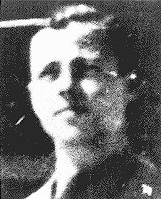
-
Dezso Rozsa
ID CardDezso was from a Jewish family in Hungary's capital, Budapest. His father had been a violinist. Dezso earned a university degree in English, and became a language teacher. He wrote a number of high school grammar textbooks. In 1914 he married Iren Hajdu, who was a mathematician. The couple had two children; a daughter, Eva, born in 1918, and a son, Pal, born seven years later. 1933-39: Dezso fears for the worst now that the antisemitic Prime Minister Teleki has taken power again. Nineteen years ago, in…
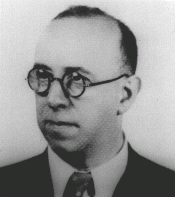
-
Klara Gottfried Reif
ID CardKlara Gottfried Reif's parents, Herschel and Ethel Gottfried, owned a flour mill and a general store in a small Polish town. Klara could speak five languages. As a young woman, she took an interest in fashion, and enjoyed travelling. On a trip to Vienna, she met Dr. Gerson Reif, a young dentist. After marrying in 1925, the couple settled in Vienna and the first of their two children was born in 1927. 1933-39: After the Germans annexed Austria in 1938, they effectively prevented Jewish dentists from…

-
Liane Reif
ID CardLiane's Polish-born Jewish parents were married in Vienna, where they lived in a 14-room apartment in a middle-class neighborhood near the Danube River. Liane's father, a dentist, had his office in their home. 1933-39: After Germany annexed Austria in 1938, Liane's father was found dead, a probable suicide. In May 1939, four months before war broke out, her mother booked passage on the St. Louis, a ship bound for Cuba. But Cuban authorities turned the ship back. Along with some other refugees from the…
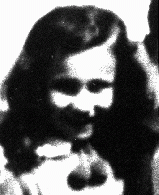
-
Leo Hanin
ID CardLeo's Jewish family lived in Vilna, which in 1913 was part of the Russian Empire. In 1916, fearing revolution, his family left for Harbin in northern China, a city with a well-organized Jewish community. There Leo joined a Zionist group and studied Jewish history, and for two years attended a Jewish primary school and learned Hebrew. He then studied at a Russian secondary school in Harbin. 1933-39: When Japan occupied Manchuria in 1931 and conditions in Harbin deteriorated, Leo's parents sent him to…
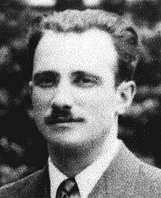
-
Irene Freund
ID CardThe younger of two children, Irene was born to Jewish parents in the industrial city of Mannheim. Her father, a wounded German army veteran of World War I, was an interior decorator. Her mother was a housewife. When the Nazis came to power in 1933, Irene's older brother, Berthold, was attending public school. Three-year-old Irene was at home with her mother. 1933-39: Celebrating Jewish holidays with all of Irene's aunts and uncles was really nice. One of her favorite places was the zoo; she especially…
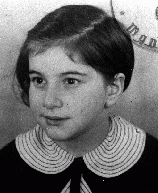
-
Kalman Goldberg
ID CardKalman was one of seven children born to religious Jewish parents in the town of Tarnow. He attended public school in the morning and religious school in the afternoon. Kalman's father owned a factory that manufactured kosher soap, sabbath candles and candles for church altars. The Goldbergs lived above their factory, which was located in a predominantly Jewish neighborhood. 1933-39: The Germans occupied Tarnow on September 8, 1939. The next day, they burned the synagogues. One synagogue, built of stone…

-
Chuna Grynbaum
ID CardChuna was born in a small one-story house that served as both his family's residence and their tailor shop. He was the youngest of nine children born to religious Jewish parents. The family's tailor shop mostly served Starachowice's Catholic Poles. The work was often done in exchange for goods such as firewood or a sack of potatoes. 1933-39: Chuna's father died unexpectedly in June 1939. After returning from synagogue one day, his father lay down to rest. He asked Chuna to close the shade to darken the…

-
Berthold Mewes
ID CardBerthold was an only child. He was raised in Paderborn, a town in a largely Catholic region of western Germany. Paderborn was near Bad Lippspringe, where there was a Jehovah's Witnesses congregation engaged in missionary work. Beginning in 1933, the Nazis moved to outlaw Jehovah's Witness activities. 1933-39: When Berthold was 4, his parents became Jehovah's Witnesses and he began to attend secret Bible meetings with them. Berthold began public school in 1936. His mother was arrested in 1939 and sent to…
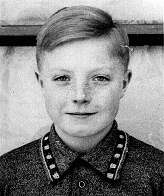
-
Ivo Herzer
ID CardIvo was an only child born to a Jewish family in the city of Zagreb. His father worked in an insurance company. Though blatant antisemitism was considered uncommon in Yugoslavia, Jews were barred from government and university positions unless they converted to Christianity. 1933-39: In Zagreb Ivo studied at a public secondary school. The curriculum was fixed and included three languages as well as religion. His school was highly selective but he enjoyed studying and did well. Though he didn't personally…
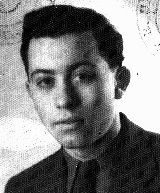
-
Martin Hans Munzer
ID CardHans was born to Jewish parents in a town in northwestern Germany. The family moved to Berlin when Hans' father obtained a post there as a history teacher in a secondary school. After graduating from university, Hans married and settled with his wife Margaret in an apartment in Berlin. In 1920 their child Wolfgang was born. Hans worked as foreign representative for a sewing notions company. 1933-39: When the Nazis won the election a few weeks ago, Hans was afraid for people like himself who are active…
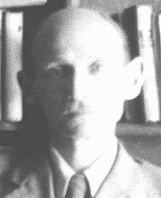
-
Carl Heumann
ID CardCarl was one of nine children born to Jewish parents living in a village near the Belgian border. When Carl was 26, he married Joanna Falkenstein and they settled down in a house across the street from his father's cattle farm. Carl ran a small general store on the first floor of their home. The couple had two daughters, Margot and Lore. 1933-39: Carl has moved his family to the city of Bielefeld, where he is working for a Jewish relief organization. Requests from this area's Jews to leave Germany have…
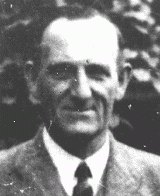
-
Arthur Karl Heinz Oertelt
ID CardHeinz, as he was usually called, was born in the German capital to religious Jewish parents. He and his older brother, Kurt, attended both religious and public schools. His father had died when he was very young. His mother, a seamstress, struggled to make ends meet. She and the boys lived in a predominantly Christian neighborhood. 1933-39: It frightened Heinz when Nazi storm troopers sang about Jewish blood dripping from their knives. But his family didn't have money to leave Berlin. In late 1939 Heinz…
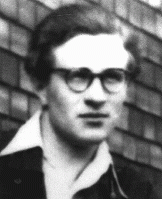
-
Monique Jackson
ID CardMonique's Jewish parents met in Paris. Her father had emigrated there from Russia to study engineering, and her mother had come from Poland as a young child. Monique's father did not have enough money to finish university, so he went to work as an upholsterer. He also shared a small business which sold his hand-tooled leather purses. 1933-39: Monique's mother was 20 when she gave birth to Monique in 1937. Two years later, Parisians were threatened by the possibility of bombing by the Germans, and French…

-
Renee Schwalb
ID CardVienna, home to some 175,000 Jews before World War II, was a major center of European Jewry. Vienna was also the intellectual heart of the Palestine resettlement movement. Most of the city's Jews lived in two large districts on the east side of the Danube Canal. Renee's father owned a prosperous men's clothing store in the city. 1933-39: German forces occupied Austria in March 1938. Anti-Jewish measures were quickly imposed. Renee's father was prohibited from doing business and his store was seized. He…
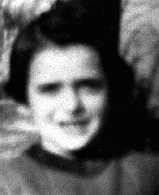
-
Flora Mendelovicz
ID CardFlora's Romanian-born parents immigrated to Antwerp, Belgium, in the late 1920s to escape antisemitism. Flora's father owned a furniture workshop. Antwerp had an active Jewish community. There were butcher shops, bakeries, and stores that sold foods which were prepared according to Jewish dietary laws. Flora was the oldest of three girls, and the family spoke Yiddish at home. 1933-39: When Flora arrived for her first day of kindergarten at public school, she was shocked to learn that there were other…
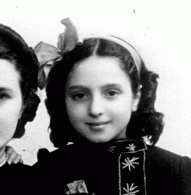
-
Frida Adler
ID CardFrida was the eldest of three daughters born to Jewish parents in a village in the easternmost province of Czechoslovakia. When Frida was 2, her parents moved to Liege, Belgium, a largely Catholic industrial city with many immigrants from eastern Europe. Frida attended Belgian public schools and grew up speaking French. 1933-39: In Liege Frida's family lived in an apartment above a cafe and across the street from a Catholic church. Frida had many Catholic girlfriends at school. At home she spoke Yiddish…
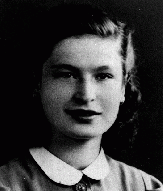
-
Aron Dereczynski
ID CardAron and his three sisters were raised in a traditional Jewish family in the town of Slonim. Most of Slonim's inhabitants were Jewish, and the town had a long tradition of Hasidic scholarship. Aron's father, Chaim, owned a yard-goods and clothing store. 1933-39: Aron attended a Hebrew-language middle school and was active in the Zionist youth movement, Ha-Shomer ha-Tsa'ir. He had been accepted to study in an agricultural school in Palestine when war broke out in September 1939 and Slonim fell under Soviet…
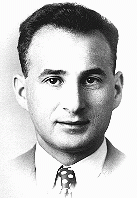
-
Rubin Segalowicz
ID CardRubin was the second of four children born to a Jewish family in the northeastern Polish town of Ivenets, approximately 60 miles west of Minsk. His father was a butcher. Rubin attended Ivenets' public elementary school until the age of 10, when he transferred to the Mirar Yeshiva to study Jewish law. 1933-39: In 1936, after completing yeshiva, Rubin made his living as a house painter. In Ivenets people would stand in front of Jewish stores and drive customers away, telling them not to buy from Jews. In…
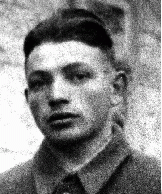
-
Tomasz (Toivi) Blatt
ID CardTomasz was born to a Jewish family in Izbica, a Polish town whose largely religious Jewish community comprised more than 90 percent of the population. Tomasz's father owned a liquor store. 1933-39: In September 1939, a drum sounded in the marketplace, calling the town to assemble for a news report. Germany had invaded Poland. More news arrived shortly; the Soviet Union was invading from the east. Tomasz and his family didn't know what to do. Some people said to run to the Soviet side; many, including his…

-
Naftali Saleschutz
ID CardNaftali was the youngest of nine children born to devout Hasidic Jewish parents living in Kolbuszowa. In the Hasidic tradition, he wore a long black coat and shoulder-length earlocks. He first faced antisemitism in the second grade when his teacher cut one earlock off each Jewish boy. Naftali escaped the teacher's shears, and his father, a respected merchant, had the teacher suspended. 1933-39: On September 9, 1939, the German army invaded Naftali's town and decisively defeated a small contingent of…
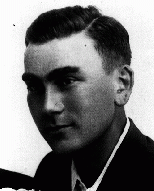
-
Boria Lerner
ID CardBoria was born to a Jewish family living in the Bessarabian province when it was still a part of the Russian Empire. Following Romania's 1918 annexation of the province, life for Bessarabia's 200,000 Jews worsened. Subject to more widespread antisemitic laws and pogroms than while under Tsarist Russian rule, many Bessarabian Jews emigrated overseas or sought refuge back in Soviet villages. 1933-39: Boria became active in a local revolutionary communist group and was arrested and jailed many times. After…

-
Leo Bretholz
ID CardLeo was the oldest child and only son of Polish immigrants in Vienna. His father, a tailor and amateur Yiddish actor, died of an illness in 1930 when Leo was 9. His mother supported the family by working as an embroiderer; Leo helped out by looking after his two younger sisters. They lived in one of Vienna's large Jewish districts on the east side of the Danube Canal. 1933-39: Anti-Jewish sentiment escalated after Germany annexed Austria in 1938. Jewish men, including some of Leo's uncles and neighbors,…

-
Dachau
ArticleDachau was the first and longest operating Nazi concentration camp. Learn about the camp's early years, prisoners, medical experiments, and liberation.
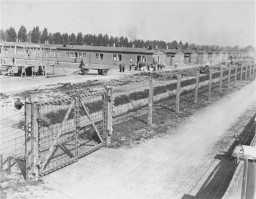
-
Morris Zaidband
ID CardMorris was one of five children born to a Jewish family in the Polish town of Oswiecim, 33 miles west of Cracow [Krakow]. Morris' father sold ladies' undergarments. Morris worked as a jeweler. 1933-39: In September 1939 Germany invaded Poland. Morris's family started to flee eastward but two weeks later the Germans overtook them and they were sent home. When they returned, the Germans were already beating Jews who didn't show them "respect." One day, when German guards came to their house to deport…
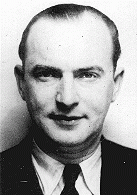
-
Ruth Singer
ID CardRuth was the only child of a Jewish family in the German town of Gleiwitz, near the Polish border. She attended public school until the fourth grade, when she transferred to a private Catholic school. Twice a week Ruth attended religious school in the afternoons. One of her favorite pastimes was playing table tennis. 1933-39: Ruth's father was born in Poland and the Nazi government considered him a Polish citizen. In October 1938 the Nazis expelled Polish Jews from Germany, allowing each deportee to leave…

-
Rachela Rottenberg
ID CardThe younger of two children born to Jewish parents, Rachela grew up in Radom, an industrial town located some 60 miles south of Warsaw. One-quarter of the city's 100,000 prewar population was Jewish. Rachela's father was a Zionist and was active in municipal affairs. Her mother did volunteer work. l933-39: Germany invaded Poland on September 1, 1939. On September 5, with the Germans rapidly advancing, Rachela's family sought temporary safety with relatives in Warsaw. They got separated along the way.…

-
Natan Offen
ID CardNatan was one of four children born to religious Jewish parents. They lived in an apartment in Cracow's [Krakow] Podgorze district, a predominantly Jewish area on the southern bank of the Vistula River. Natan's father was a shoemaker until 1936, when he became a dealer in billiards equipment. His mother worked as a dressmaker. Natan and his siblings attended Polish public school. 1933-39: When Natan was 13 he built a crystal radio. Late at night, Natan and his father would listen to stations from all over…

-
Sandor Braun
ID CardOften known as Sanyi, Sandor was born to religious Jewish parents in a small city in Transylvania, a province that had been ruled by Hungary until 1918. During the 1930s his home city was renamed I.G. Duca in honor of a slain Romanian leader. The fourth of six children, Sandor was also known by his Hebrew name, Yitzhak. The Brauns knew Yiddish, Hungarian, Romanian and Hebrew. 1933-39: Before Sandor's fourth birthday, a babysitter took him on an outing into the forest. When she fell asleep he wandered…
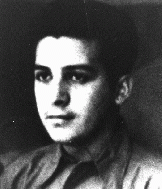
-
Frederick R. Wohl
ID CardFrederick was born to a Jewish family in the resort city of Baden-Baden, located in Germany's Black Forest region. His father owned a pharmacy there. His parents were proud German citizens and Frederick's upbringing was not religious. He was sent to Switzerland on a student exchange program just before the Nazis came to power in 1933. 1933-39: Back in Germany Frederick worked in a machine factory for two years but was fired for being Jewish. In Frankfurt to look for work, he went to a Mardi Gras festival.…
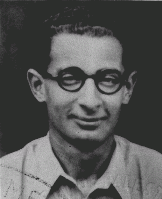
-
Yakov Biber
ID CardYakov was the youngest of four children born to a poor religious Jewish family in the village of Matsiov in Ukraine. Six years after Yakov was born, Matsiov was ceded to Poland. When Yakov was 14 his mother died and he had to quit school in order to work. Yakov was a Zionist and hoped to settle in Palestine [Yishuv]. 1933-39: In the Young Pioneers, a Zionist group, Yakov directed the dramatic productions the group put on to raise money for the Zionist cause. It was in the Young Pioneers that he met Chava,…
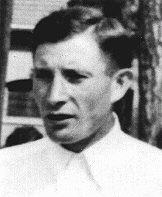
-
Barbara Nemeth Balint
ID CardBarbara was born to a middle-class Jewish family in southeast Hungary. Her father had a store that carried grocery and hardware items. Barbara had a sister named Margit and a brother named Desider. In 1928 Barbara married Istvan Geroe and moved to the town of Torokszentmiklos. Her son, Janos, was born there a year later. 1933-39: In 1933 Barbara divorced and returned with 3-year-old Janos to her parents' home in the town of Szentes. She helped run her parents' store, which was located on a busy inter-city…
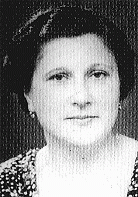
-
Janos Geroe
ID CardJanos was the only child born to a Jewish family in the small agricultural city of Torokszentmiklos, about 65 miles southeast of Budapest. His father, who had a degree in pharmacology, joined his family's grain exporting business. 1933-39: In 1933, when Janos was 4 years old, his parents divorced. According to Hungarian law, Janos was to live with his mother until he was 7 and then return to his father. Janos moved with his mother to her hometown of Szentes, where he began studying at a religious primary…
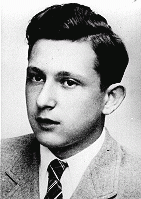
-
Margit Nemeth Fekete
ID CardMargit was born to a Jewish family in the city of Szentes. In 1919 she married and had a son, Gyorgy. When Gyorgy was still a baby, Margit divorced, but she remarried several years later. Her new husband, Vilmos Fekete, worked as a manager in a large electric company in Ujpest, a suburb of Budapest. Margit settled there and her son stayed in Szentes with his grandparents. 1933-39: Margit and her son saw each other as often as possible. Margit would travel by bus to Szentes to spend the Jewish holidays…
